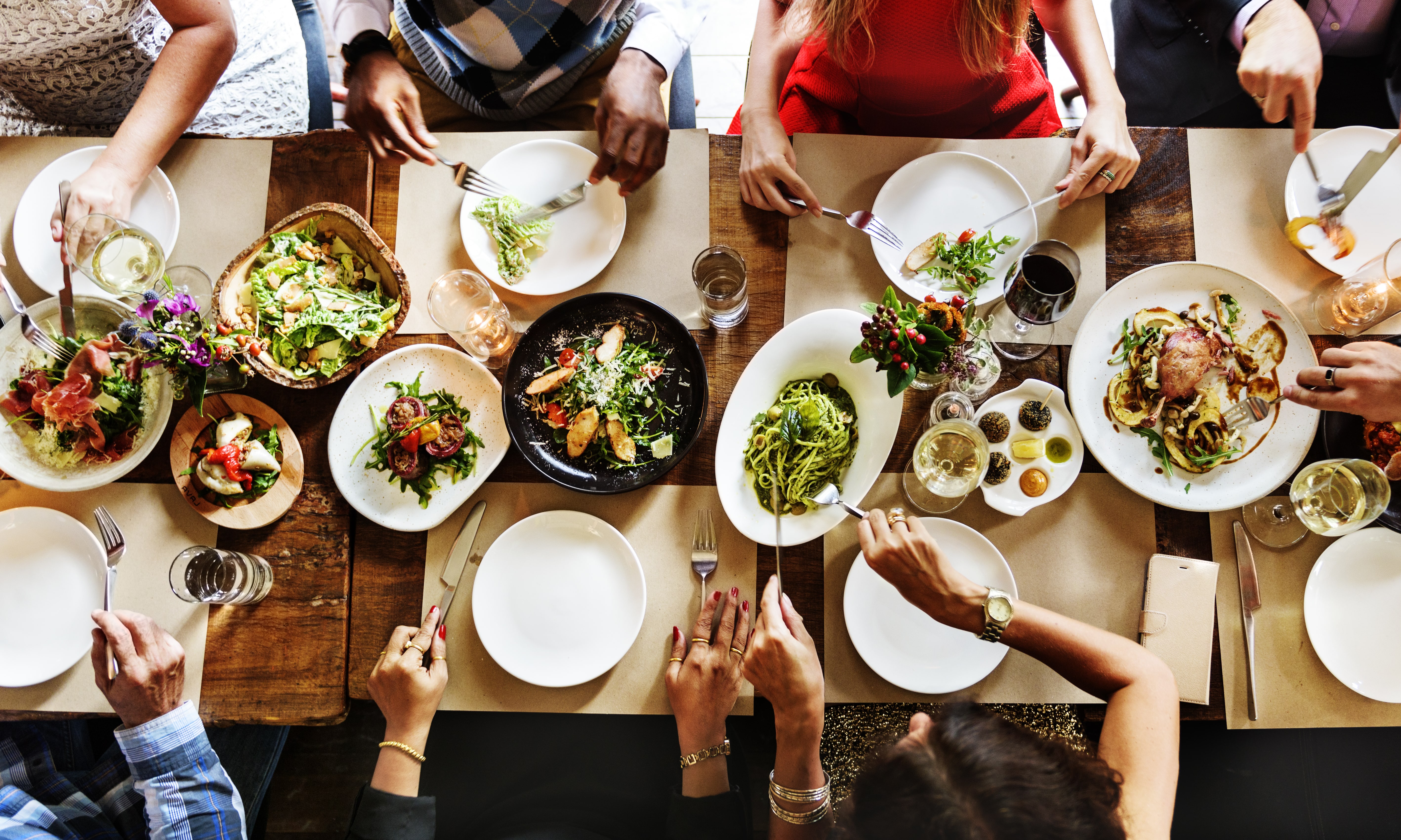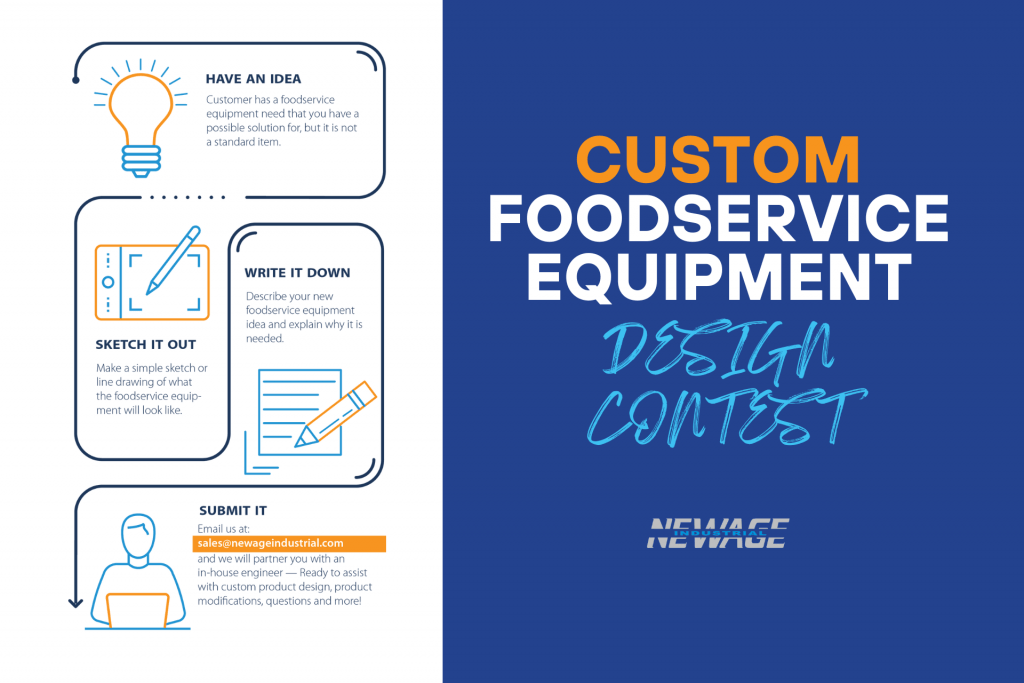
As 2019 dawns, savvy foodservice consultants and operators alike already know what lies ahead. There will be enhanced technologies and unexpected surprises, to be sure, but also the expansion of trends with which they have long contended.
Progress marches on – in the form of increased automation and robotics in back-of-house equipment; the industry’s ongoing labor shortage and need for more employee education and training; consumers’ hunger for new and exciting cuisine options; advances in point-of- sale systems; the growth of artificial intelligence; the use of virtual reality in kitchen design; strategies for cutting food waste and improving sustainability; the expanding demand for delivery; and cashier-less retail outlets.
What, then, will 2019 be like?
“A whirlwind – I think it’s just going to be absolutely insane because there are so many balls in the air right now,” says Joseph Schumaker FCSI, principal design consultant for SCG FoodSpace in San Jose, California. “There are so many disruptive startups trying to make a path, everything from alternative protein to clean meat. Every sector has some sort of innovation happening. One of the big things I am seeing is a lot of people from outside of the industry coming in to try and disrupt, and they are gaining traction.”
Kristin Sedej FCSI, president of S2O Consultants, Inc. in Illinois, says she sees several dynamics in motion. “I think you have a blend of a few things. We’ve got a shortage of labor, which is changing the way we operate. We do a lot of sports work, so we are seeing a lot more grab-and-go retail-type situations, and we are seeing remote ordering. There is a lot more use of technology apps with all combinations of ordering and marketing.”
William J. Caruso FFCSI, of WC & Partners, Inc., in Denver, Colorado, says he sees three or four areas that could prove to be key. One that he has seen especially in corporate and business dining is the “well” program. “It’s not only about food, although food and nutrition and all of that good stuff we do and plan are certainly included. But it is extended into things like having certain types of glass in the windows and ergonomically designed desks and chairs, such as stand-up desks.”
On the foodservice side, Caruso says operators are looking carefully at nutrition. “We are creating our own herb gardens right in the dining rooms of some of the corporate facilities we’re designing, so employees can pick out the types of herbs and vegetables they want. This is one of the newer-wave-type things.”
As part of that, he adds: “We are also getting into agri-system development on campuses – meaning, if it’s a large business-and-industry campus or a large college or university, everything from raising laboratory meat to raising and harvesting all the crops, developing more nutritional value. When we say from farm to fork, we mean it now.”
The most common trends taking place in Central America are the rebound to ethnic cuisine and using raw materials and products from local sources, “but making combinations with high cuisine products to take them to the next level,” says Juan Matamoros FCSI, principal of Food Gurus Centroamerica in El Salvador. There is also what Matamoros calls the “development of emerging businesses: small venues with concept and depth in their food offer and with many tables but in spaces no larger than 70 to 80 sq m.”
There is, he says, a “very aggressive program of openings due to their small sizes and low investment.”
New cuisines
Arlene Spiegel FCSI, the president of Arlene Spiegel & Associates in New York City, foresees, “hyper-local farming – think rooftops in cities – gaining ground”.
Also ahead in 2019, she believes, are, “hyper-regional ethnic recipes focusing on small villages and towns rather than cities and capitals.” So are so-called, “gut foods, menus and recipes geared for gut health.” Americans will also look to keto diet foods, dishes with low to no carbs, she adds. SCG’s Schumaker points to cultured meat as a trend to keep an eye on, although he thinks, “we are years out from cultured meat actually being on the plate. But there is going to be some huge innovation in 2019 on it, and some regulatory moves in all the categories. Plant-based will continue to take market share, and flexitarianism is a real thing. People are choosing to eat less traditional protein.”
In scoping out the year ahead, Rudy Miick FCSI, the founder and president of The Miick Companies, LLC in Boulder, Colorado, talks about things like “root vegetables as entrees, less red-meat protein, and marijuana is coming. Organic and farm-to-table/fork is going to be more and more the norm.” Box wine and private labeling, he predicts, are going to be seen as “solid and smart, instead of cheap.”
What S2O’s Sedej says she sees happening a lot is operators bringing local flavors into their establishments, including higher-end, sports-branded concepts. “We always think of cuisines that we are familiar with or even cuisines that we are not so familiar with, like Asian fusion and other things like that,” says Caruso. “But one of the things we are seeing a lot of, and this astounded me, is certain South American and Central American cuisines – the chimichurris – things that have not been really seen in the US to date.”
Those far-flung cuisines are also showing up in lower-end dining operations, Caruso continues: “We are seeing them in basic, run-of-the-mill-type establishments now. It’s commonplace. When you talk about Peruvian, Chilean, or certain Brazilian regional dishes, they are sexy and people have heard all about them, and like them. The Millennials want to go to those countries, they want to be involved and learn more, so they can experience them through their cuisines.”
New technologies and equipment
“We are going to continue to see startups, new companies coming into the industry, ” Schumaker says. He is also convinced the industry will see a flood of robotics in the year ahead “in existing technology from other industries coming into the food industry. For example, a company we are working with out of Boston is taking robots already in the marketplace and applying their tech to essentially do food processing.”
Schumaker is also looking for those new technologies to pop up inside restaurants themselves. One example he cites is a robot he has seen that, “is capable of scooping ice cream. It can replace the ice cream worker at a Baskin Robbins or a Cold Stone, today. That technology exists; now it’s just about adoption.” Given the industry’s labor shortage and the cost of labor, he believes the devices will find their way into use rapidly. “There is going to be tremendous growth in 2019 on it.”
Miick believes that in the coming year point of sale (POS) technologies, “will continue to become less expensive and more vibrant. Artificial intelligence (AI) is coming for concepts, especially pizza and burgers, that are consistent and production-based more than unique one-off dishes.” In addition, he sees virtual reality increasingly becoming part of both training and design.
Sedej cites new technologies focusing on remote ordering, such as apps and integrated menu boards. “Even in the schools, can we get that order to the kitchen so you just have somebody assembling it? There are many ways to see that happening.”
“We have heard of the ventless ceilings for years in Europe,” Caruso says. “I think they are coming to the US now. It’s the ability to create seamless ventless systems, where we are dealing now with ventless technologies in small spaces on certain types of grills and equipment. They are built-in, a part of the equipment now. That is going to increase very rapidly.”
The industry is already at work putting robotics in place. Caruso saw it during a trip to Southeast Asia “where they are used to it, where they can’t get people. Singapore is an example. They can’t get people from Malaysia, and the people they do get are not well trained. So they are spending millions on robotics to move food, to transport it, to logistically set it up. We will see more of that here in 2019.”
Latin America, and especially Central America, meanwhile have been “in diapers in its technological preparation in the back of the house,” says Matamoros. Because of low labor costs, the absence of first- class equipment is compensated for with a greater number of employees in the kitchens. “But this is changing step by step as more and more restaurant owners are starting to make investments that make a huge difference, incorporating first-line equipment, especially in the preparation areas such as the cook-and-chill process.”
High-speed heating equipment is starting to be used to enhance the front of the house, he adds. “I consider that the hotels are the ones pioneering with this equipment due to the requirements of the hotel franchises.”
Labor
Continuing into 2019, the foodservice industry will have to grapple with rising labor costs and a shortage of talent. “The unfortunate thing is that the ‘school system’ in the industry is not set up to encourage and empower people to choose this career path,” says Schumaker. “There is going to be lots of conversation about how we fix that in 2019. I don’t think we have made any real strides. There is little movement on how we educate future students to do what we do.”
“The profit sharing, open books and purpose/values-driven workplace is going to still outperform attempts to cut labor and reduce minimum wage, and still be seen as odd or weird instead of visionary,” says Miick. “It’s the industry’s loss.
Fighting minimum wage will continue, much to the pain of our industry. So sad.” The scarcity of employees is driving much of the change, Sedej points out.
“You’ve got a shortage of labor, so any time you can transfer some of the tasks to the consumer versus the operator you are going to have labor savings.”
Sedej uses the example of a sports facility to illustrate her point. “You create an app that lets someone order from his seat. They order and pay, so you just have somebody assembling the food. There are companies such as Apex [Supply Chain Technologies] that have food lockers, where the customer will be texted a code, they walk up, punch in their code, and their food is there. You no longer have an order taker; all you have is someone selling the order and putting it out, so you cut your labor in half. That’s one approach.”
Another is a grab-and-go situation in which food comes pre- packaged rather than being made onsite. “You have fewer health department problems with prepackaged food. You don’t need the three-compartment sinks, the hand sink; it’s all done somewhere else,” says Sedej says. “So when it comes to service you have less infrastructure, and then, again, you have less labor because you are coming into a c-store type situation where you grab and go and then pay on your way out. You have cut your labor in half and you have cut your infrastructure in half.”
An ability to think outside the box has always been a strength of restaurant professionals, and will be more important than ever in 2019 and beyond. Juan Martinez FCSI, principal of Profitality in Miami, Florida, recommends a trio of approaches to the ongoing labor crisis: working harder, working smarter and not working at all. While the first two are self-explanatory, the third begs the question.
As Martinez explains, “Although initially this would suggest giving up, what I mean by that is still doing the tasks necessary to deliver the brand promise, but leveraging food, equipment and technology platforms.”
Sustainability
Efforts to maximize sustainability will gain steam, not just for the good of the planet, but for the good will of patrons. “Sustainability, organic, short-haul farm- to-fork/table are going to be more and more expected and normal, not unique,” says Miick. “Kid-healthy food in school and garden programs will continue to grow.” Another component he predicts, will be, “fights with Big Food. GMO will continue, and we ought to lead the way.” Spiegel predicts an expanding ban on plastic straws, plus, “increased awareness of compostability ratings on paper goods,” and heightened social consciousness.
The industry should also see what Schumaker terms, “an interesting little burst in the food-waste side of things.” Last year, he notes, “there was a huge investment by companies. I think we are in a bubble right now. The discussion is more about water and energy resources. I think they got a little shielded by food waste in 2018.”
Schumaker is convinced American business needs to get back to talking about water reduction, “and that goes back to protein, especially in the food industy, which is the largest consumer of water on the planet. We have to be participating in the conservation conversation.”
In 2018, Schumaker continues, there was a lot of investment, “in measuring waste, tracking waste, and trying to reduce waste through technology. I think we are going to pivot. There are a lot of companies that are using the ‘ugly’ produce; for instance, there are salsa companies that are using it.” He sees the ‘ugly’ produce trend continuing, “minimizing the agricultural waste at the front end, not in the back end, where we spent all of 2018 looking.”
Sedej and her team have seen operators pulling away from digesters – technologies that use enzymes, “so you could break dow food waste to where it became gray matter and you could just flush it into the sewer system. Those came out hot and heavy, and we have seen them kind of falling apart. The technology is not reliable at this point.”
Caruso says he deals a lot with solid waste systems planning and design. “We are seeing all sorts of new products coming out that are regenerated from waste product, like old rice paper. A lot of our clients, and contract catering firms, are telling me they recycled and used in various ways. I think you are going to see more of that.”
Although isolated efforts are being made by chains in the name of sustainability, Matamoros says that in his region the topic “is not on the agenda, in the short term, of restaurants and owners of gastronomic facilities.” Instead, their priority is lowering import costs. “The problem is consumers are not willing to pay more for sustainability, although it is for their benefit and especially good for the planet. It is a matter of culture that needs to be advanced more in Central America in the long term.”
Howard Riell




